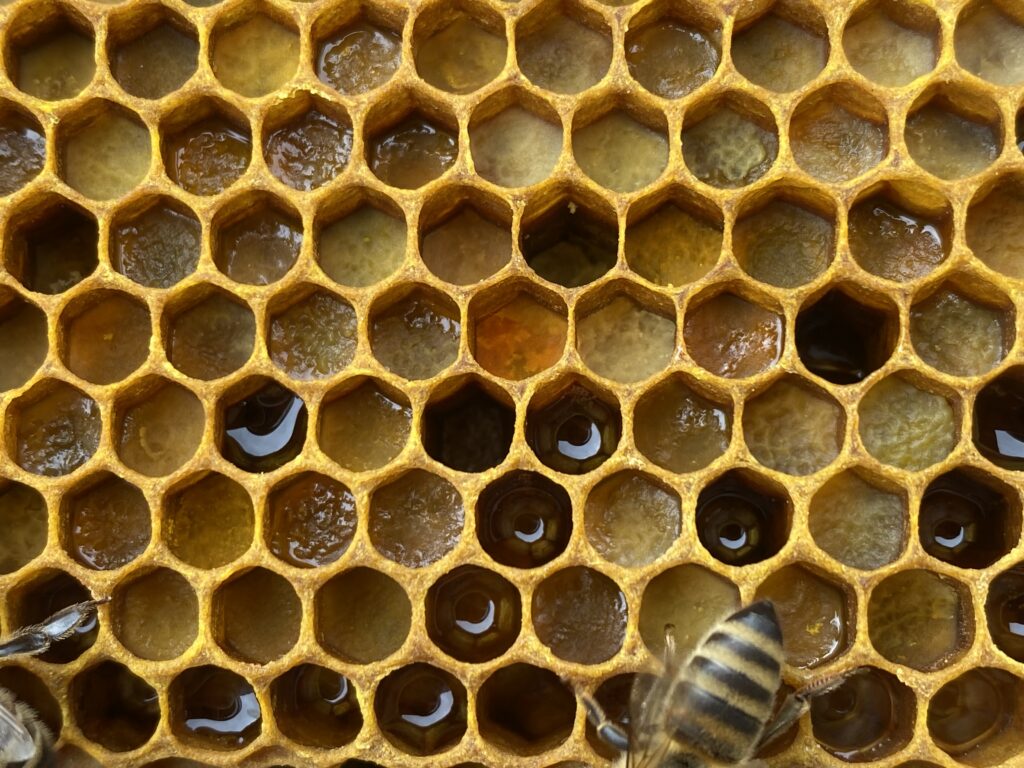
Keeping bees is a delicate balance.
You have to expect them to do the unexpected – because that’s what they do.
The beekeeping season feels short this year. A late spring, poor summer and what feels like an early onset of winter. I need to give them some thick syrup, but don’t want to open the hives and chill them. Each colony has a full super of stores but the outer frames of the brood boxes are empty. It’s the first time I haven’t seen stores in this area.
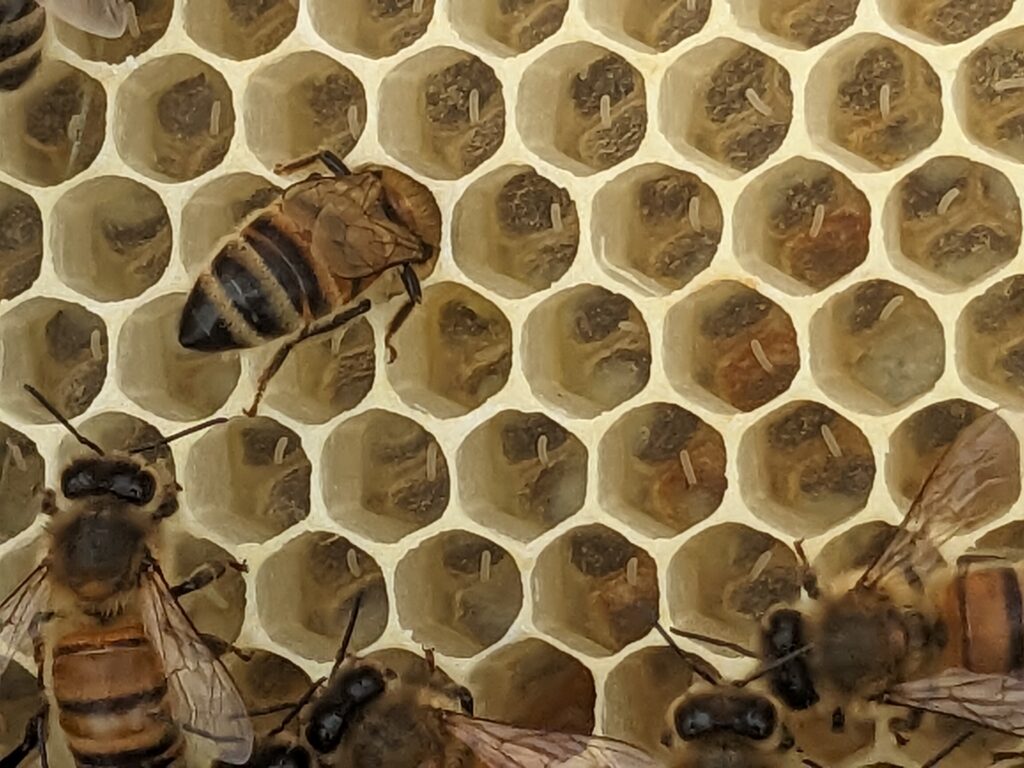
I’ve also got a colony which seems queenless but she’s been an intermittent layer most of the season. It’s a smaller colony and I’ve been waiting for a warmer day before deciding what to.
I’m still waiting!
If she can’t be found, I can merge the colony with a stronger one or transfer the frames into a smaller nucleus hive (a nuc) with less space to keep warm, then donate some eggs for them to make a new queen in the spring. Or I could leave them where they are and cross fingers and toes. This is the reality of beekeeping.
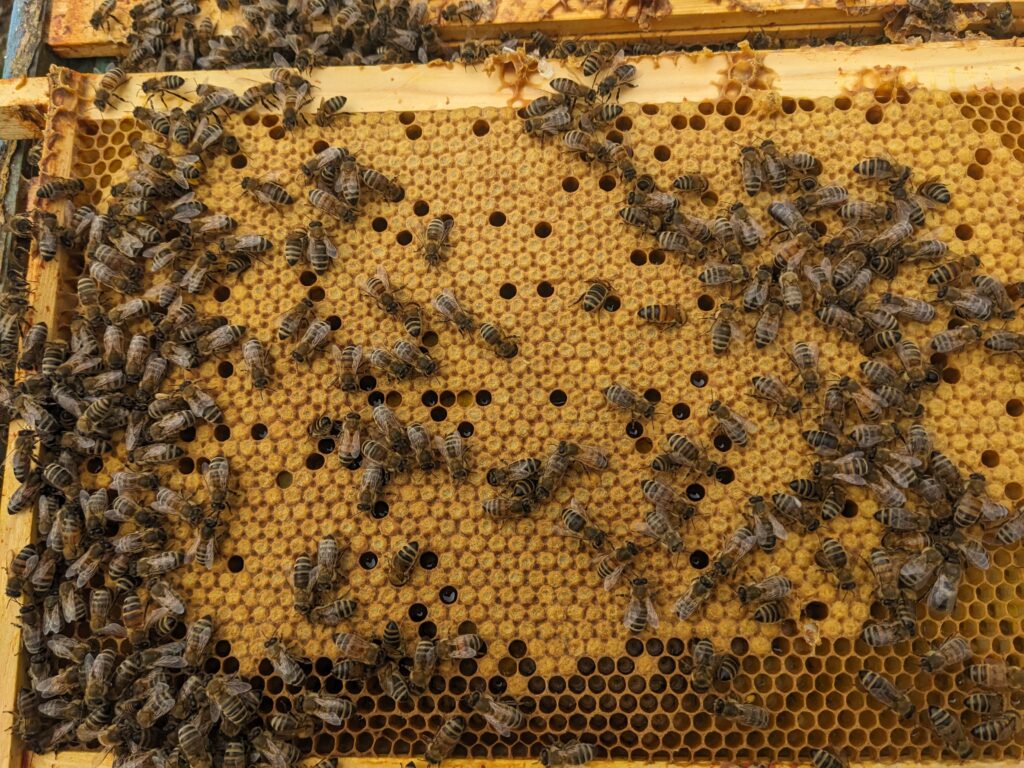
Each colony is unique. The difference between them is fascinating. You shouldn’t anthropmorphise bees but they show different characteristics which are hard to explain from an evolutionary standpoint. My bees share the same genetics, location, forage and climate yet seem to approach survival in different ways.
Looking back to spring, it’s been a challenging season. A warm start was followed by an extended period of cold. Swarm preparations began early but new queens were unable to get out and mate. I had two swarms on consecutive days and wrote about this in Swarming bees.
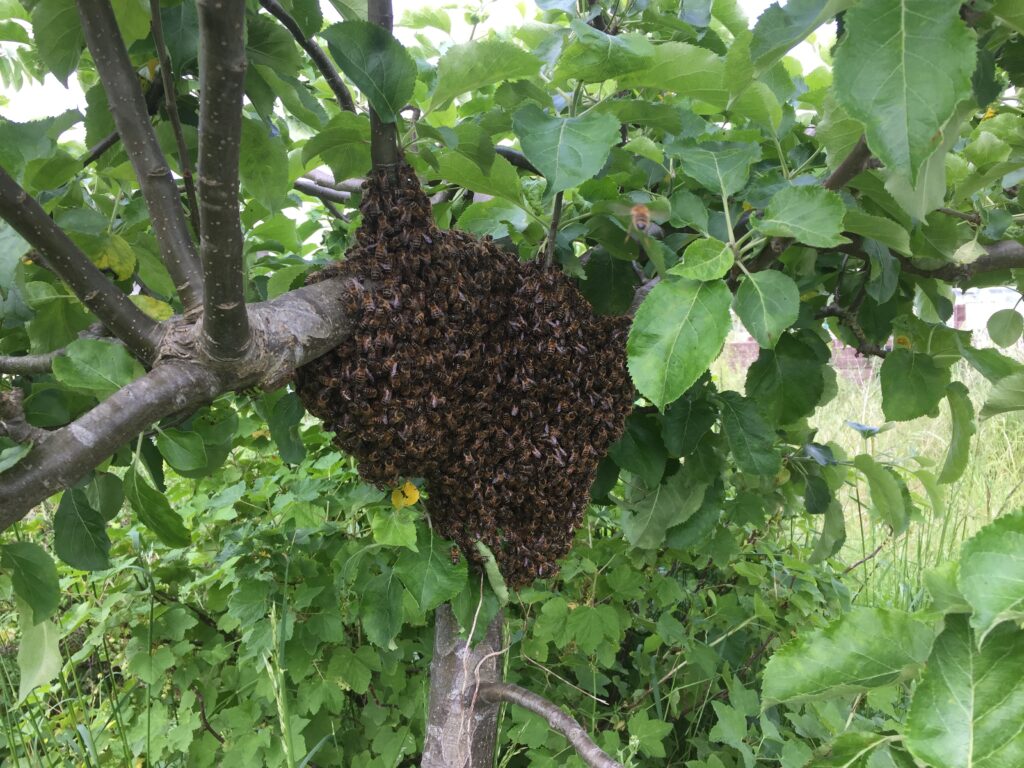
The cold spring meant starvation was a problem. I had a nuc where the number of bees was down to a handful but they’d kept their queen alive so I fed them last year’s honey. It was the first time I’d tried this and they loved it. The queen and her tiny colony was transferred to a queenless hive where she is still going strong.
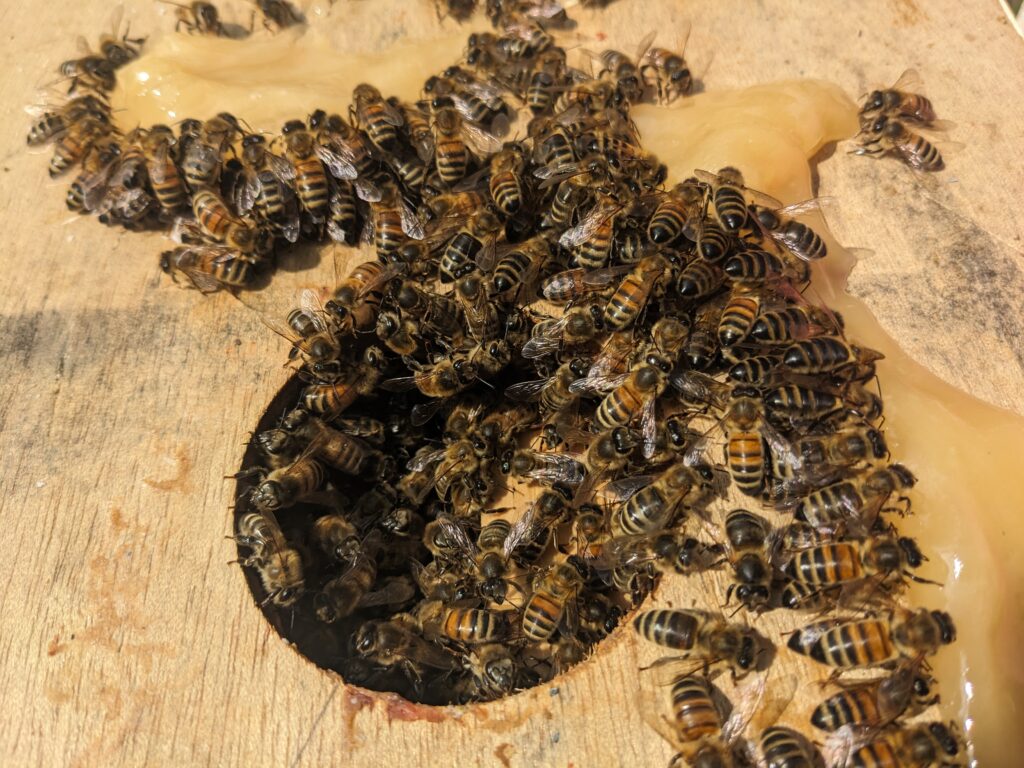
honey For the first time I like to have a landing platform below the entrance and some of these have been built onto a frame. I put a hive floor on top of one and didn’t think anymore about it until I noticed a lot of bees hanging out around the back. A closer look showed there was comb hanging down so the next hot day, I took the hive apart.
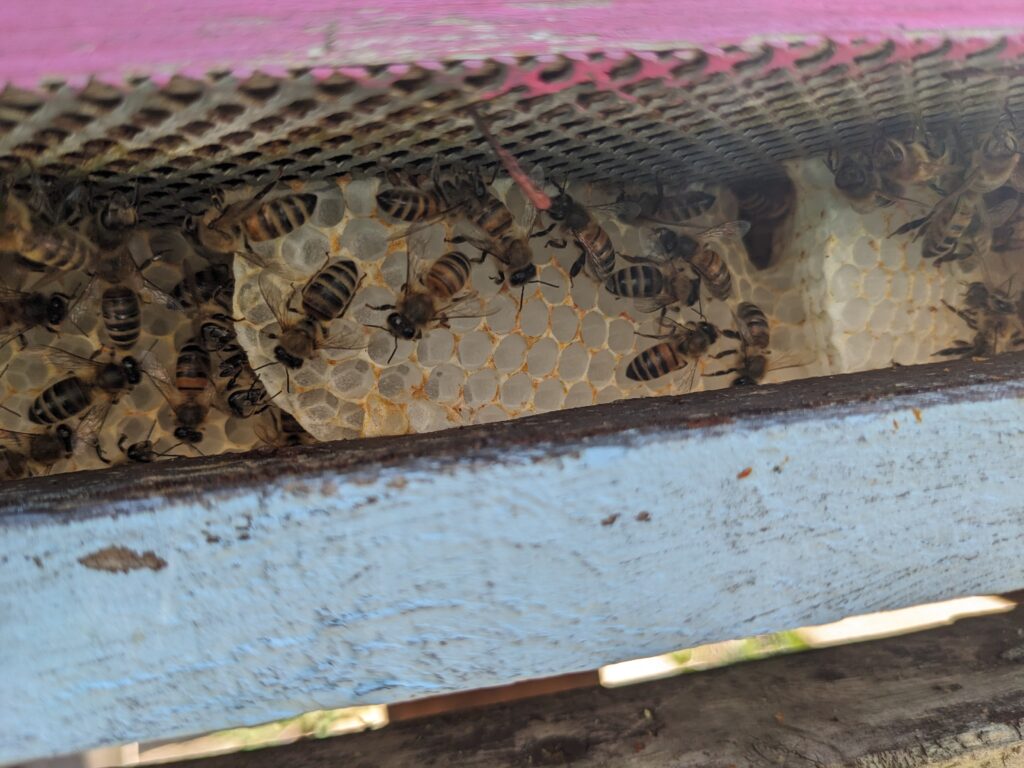
More than a platform, the structure also had an open mesh base. Because I’d put another floor on top, I’d effectively given them a double floor and they’d chosen to build in the gap between. After separating the floor, I stood one its end and filmed the video clip below to demonstrate what it looked like.
In the wild bees build comb in empty spaces like hollow trees. This colony had a brood box with frames of foundation wax but they’d found themselves with space and I guess thousands of years of instinct kicked in. Some of the wax was pure white but you could see the dirty footprints they’d made as they walked around the edges of the cells.
It upset me to undo all their hard work but I needed to encourage them to build inside the hive, not below, so it had to be removed. The wax will be made into beautiful smelling beeswax candles to won’t be wasted and next year I’ll be more careful when putting hives onto floors.
Sting wise, there’s been quite a few!
Far less on my fingers during inspections, which is good, but I’ve had multiple stings on my face and neck. Usually, getting stung is down to the beekeeper. I accept blame for most of them. Getting stung when I should know better
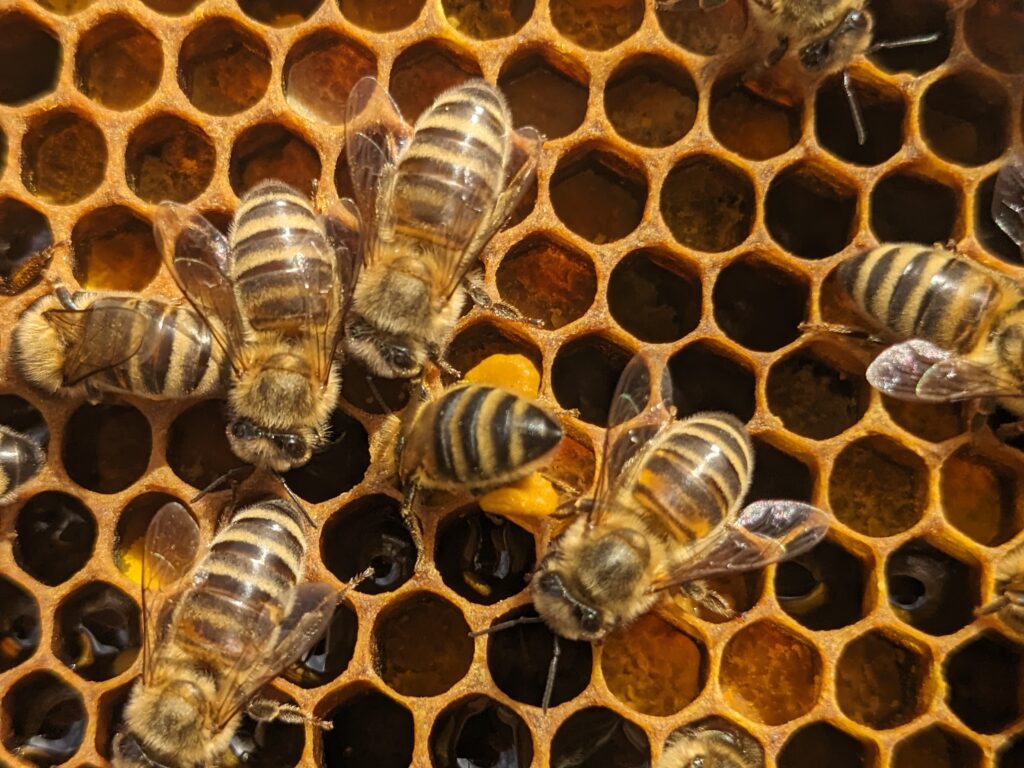
The wire around the hood of my favourite suit has twisted. This makes it harder to keep the veil off my face. Stings on the nose are the most painful I’ve had but it’s also the first year I’ve had problems being ‘chased’.
Guard bees protect the hive. Sometimes their enthusiasm took them out of the apiary, where they showed a level of determination beyond the boundaries of my plot. Several times I’ve been ‘chased’ and while it’s best to avoid running or flapping, I’ve ended up half-in and half-out of my beesuit doing the ‘don’t sting me’ dance, often to the amusement of fellow allotmenteers.
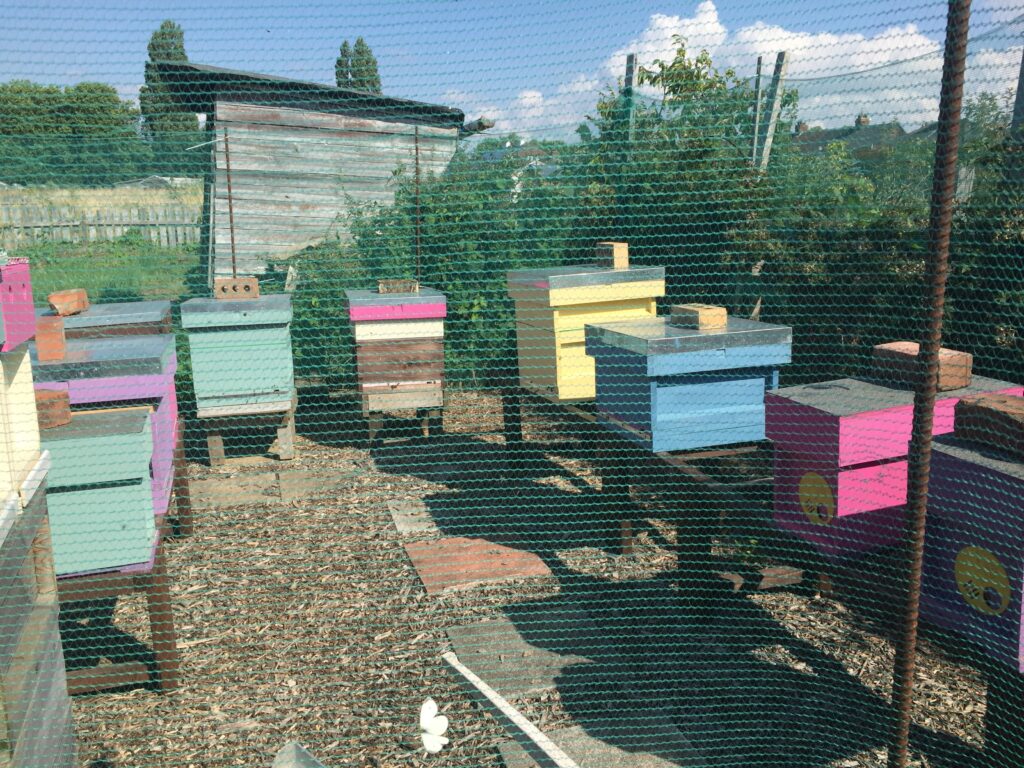
The risk of stings during inspections is a given but it’s the first year I’ve been stung while working on the plot far away from them. The bee dies afterwards so it’s hard to understand why they sacrifice themselves this way. It also worrying because I fret about others getting stung. Apart from the pain and risk of Anaphylaxis, it only takes one complaint for the council to issue the bees an eviction notice.
It seems some humans are more attractive to bees than others. Several times this year, my son has walked onto the allotment, a bee come from nowhere and stung him, usually on his face or neck. It’s a mystery why they do this. He doesn’t look like a highly coloured flower so it’s not a case of mistaken identity – more like intention to harm – even at the expense of the bee’s life. I now have a first aid sting kit permanently on the allotment and hope it’s not going to become a permanent risk. Allergies to bee stings can be life threatening and beekeeping forums report beekeepers developing anaphylaxis after years withouta problem.
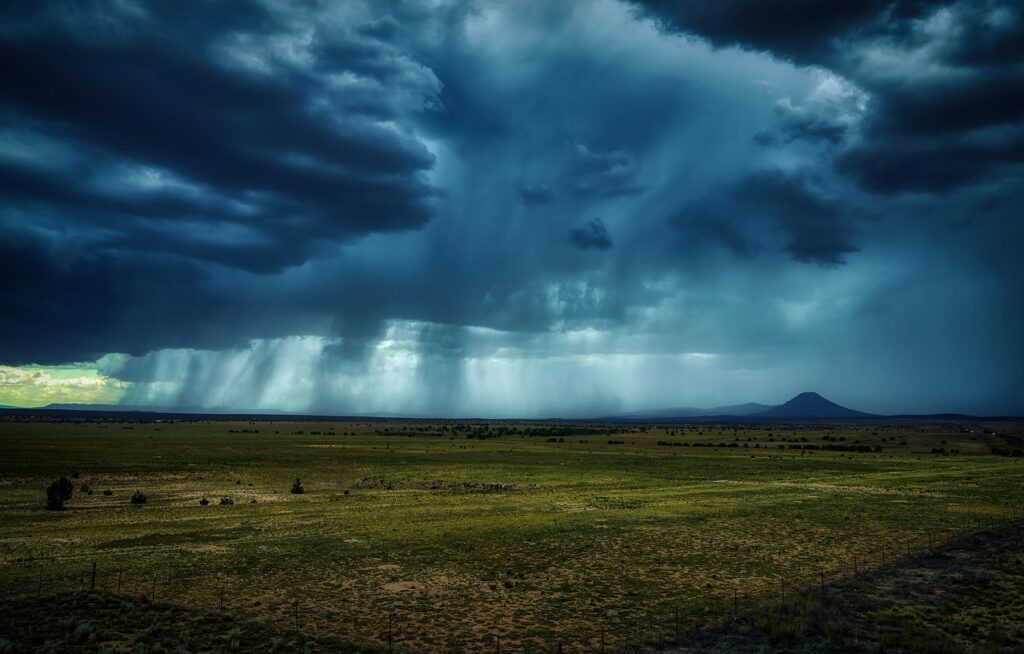
The cycle of nature is disturbed. Unpredictable weather has become the norm. Farming practices have affected habitats while pesticides can be fatal but a traditional enemy of the bee is missing. There’s been an absence of wasps in 2024. Unloved, but they still play an important ecological role.
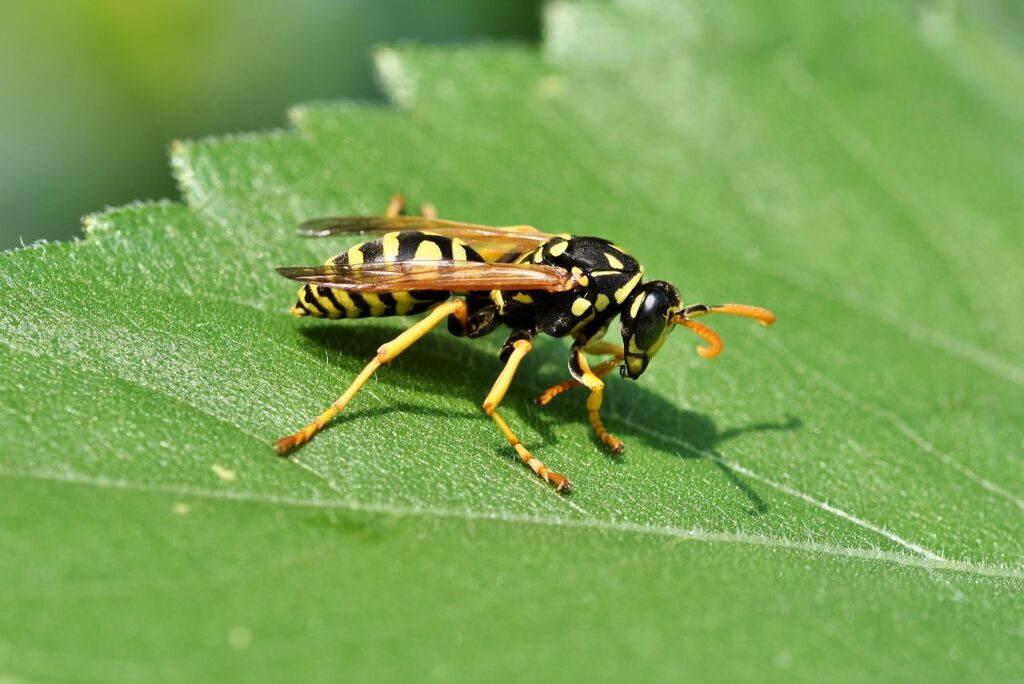
I posted about recognising the Asian hornet earlier this year. They can devastate a honeybee colony in hours and their arrival in UK poses a serious threat because bees are so vital for pollination. The Asian hornet has recently been renamed as the yellow-legged hornet in an attempt to help with identification. Raising public awareness is key to finding and destroying their nests.
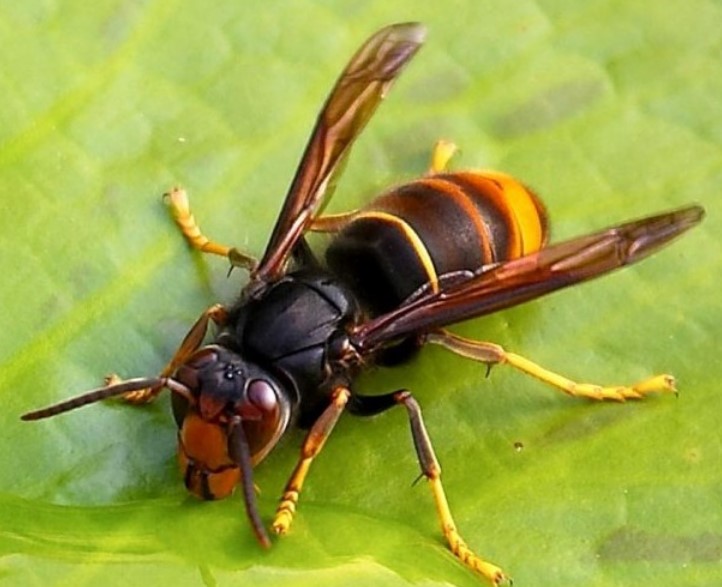
Despite the poor weather, the bees found good sources of forage this year. The final task in the beekeeping calendar is to extract the honey and there will be a post about this in a few weeks.
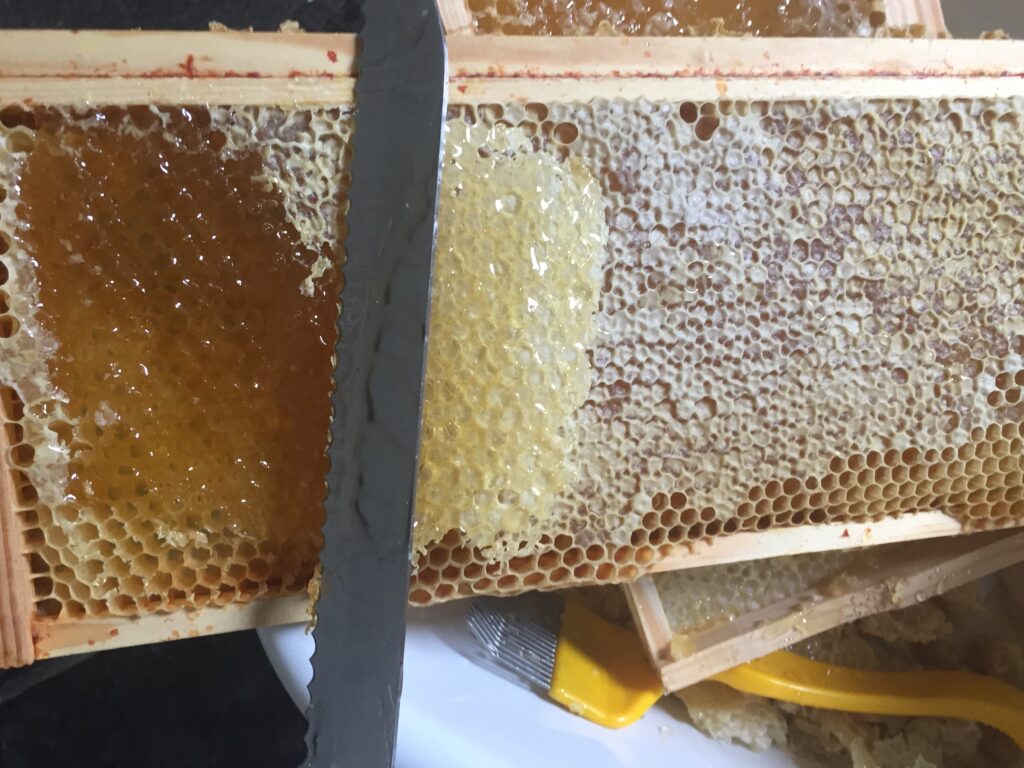
I’ve began keeping bees in 2020.
I make mistakes.
I get things wrong.
But bees have been surviving for millenia. They know what they’re doing and I’m learning from them.
I’ve set up little you tube channel here with short clips from inspections. It’s the next best thing to being there and sharing the experience 🙂